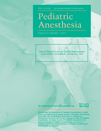Incidence and causes of perioperative endotracheal reintubation in children: a review of 28 208 anesthetics
Section Editor: Dean Kurth
Summary
Objectives/Aim: To determine the incidence, risk factors, and causes of endotracheal reintubation in children and identify methods to reduce the occurrence.
Background: Reintubation during the perioperative period is a serious and potentially preventable adverse event that can result in significant morbidity.
Methods: A total of 28 208 anesthetics were delivered to pediatric patients at our institution between May 2006 and May 2009. Reintubations were identified with our quality assurance (QA) surveillance database coupled with chart review by our QA nurse. Cases were classified as planned versus inadvertent extubations, and adverse events were assessed.
Results: We discovered 27 cases of reintubation with an incidence of 9.6 : 10 000 anesthetics. Reintubated patients were found to be younger than the general population (P = 0.001) with a high rate of comorbid disease. While most reintubations could be attributed to respiratory causes, 30% were attributed to inadvertent displacement of the endotracheal tube. No mortalities were seen, but 22% of patients needed resuscitative medications and 7% received chest compressions. Of the patients who failed planned extubations, 53% were left intubated with an average duration of postoperative intubation of 2.4 ± 1.9 days.
Conclusions: The incidence of endotracheal reintubation in children is low, but can result in significant morbidity. Because of the high frequency of inadvertent extubation, a significant number of reintubations could be prevented with greater care during transfer of patients with endotracheal tubes, and in procedures near the airway. Increased vigilance in younger children is also recommended as children under 3 years old required the majority of the reintubations.




